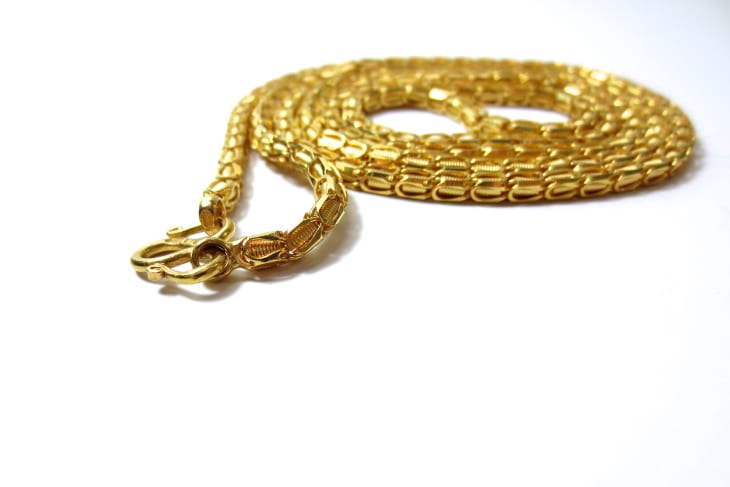Chains: creating a lasting impression, one link at a time. Chains are the only jewellery besides the rings that men and women wear across all cultures. The chain is used to beautify, symbolise or literally wear an attitude.
The huge variety of chains designed all over the world is a matter of study in jewellery designing courses. Students getting trained at jewellery design courses, are aware of the diverse styles of crafting chains.
It’s interesting to explore a few popular types of chains by design in realm of jewellery designing. The types of chain we are going to look at are essentially based on the chain link design. Afterall, a chain is made by a series of interlocking links or as a strand of materials hung on a string. Designing chains for different occasions and purposes are included in the jewellery design curriculum at Hamstech Institute.
Ball/Bead Chain
It’s a model of chain where balls or beads are set on a string or are attached to each other. Bead chains are mostly designer chains that are fashioned with metal beads, pearls or beads made from other materials. Interesting varieties of ball/bead chains include dog tag necklaces, rosary chains, glass bead chains and wooden beaded chains.
Cable Chain
Cable chains resemble a lasso or rope, with interlocked series of oval rings. It’s made in metal and very commonly crafted in gold, silver and steel. The interlinking rings of the chain are generally in uniform size, while variations in ring sizes are also experimented with. These classic chains are simple, strong and durable.
Curb Chain
Curb chains resemble the cable chain, but differ slightly. Here, the interlocking rings are twisted so that they stay interlocked even when laid flat. The rings are sometimes given a diamond cut that improves its sheen. The curb chain design is largely used for bracelets.
Byzantine Chain
This chain is a thick set of round links made from different angles. The interlocks are intricate and complex and resembles a rope-like structure. These chains are made to be flexible, lighter and softer compared to tougher types viz. cable chains.
Wheat Chain
Wheat chains are made by connecting twisted oval rings, with the linked rings giving an impression of tips of wheat stalks aligned in one direction. This plaited sort of design makes the chain very flexible.
Omega Chain
Omega chains are crafted by lining up metal plates side by side and compressed to a base wire. A very rigid chain design, it’s used to make chokers, as the design is not suitable for long chains. Though strong, the lack of flexibility renders the chain vulnerable to damages. But it’s a great design for occasion wear.
A snake chain, commonly labelled as “Brazillian chain”, constitutes a series of wavy metal plates connected to each other. Compared to Omega chains, it’s more flexible and has a more rounded structure. Snake chains are great for wearing pendants.
Innovative designs for chains can be made based on the basic design types like the ones we discussed. An understanding of chain types thus make jewellery designing a much more focused and informed activity.








